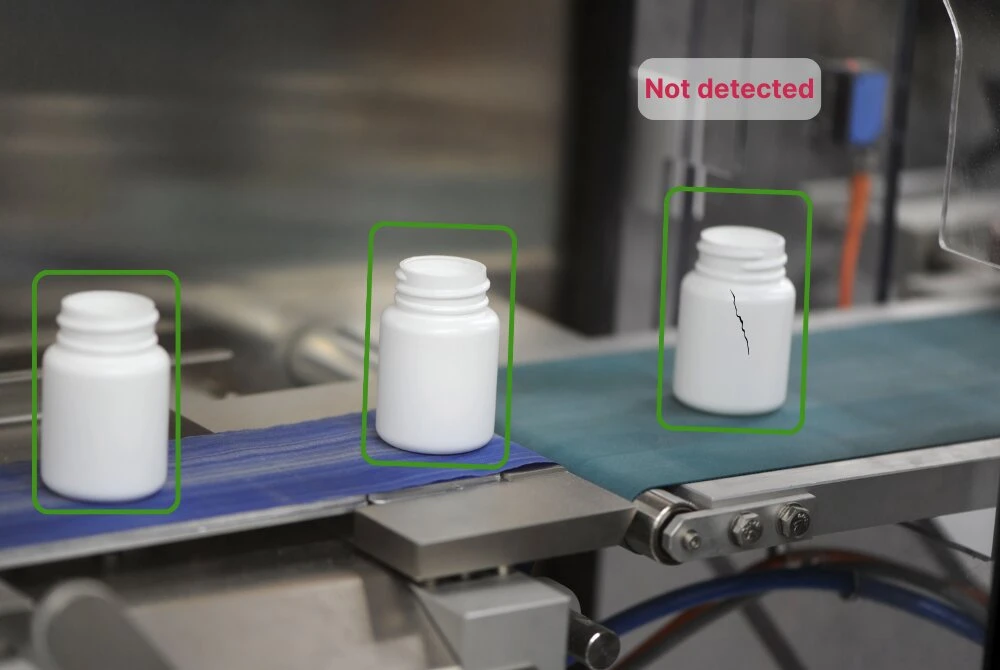Common Mistakes When Implementing AI in Industry
Learn about common pitfalls when implementing AI in industrial settings and how to avoid them.

Implementing AI in industrial environments can transform quality control and operational efficiency. However, many companies stumble during implementation, wasting time and resources on approaches that don’t deliver results. Here are the most common mistakes we’ve observed—and how to avoid them.

Mistake 1: Starting Without Clear Objectives
The Problem
Many companies implement AI because it’s trendy, without defining specific, measurable goals. They end up with impressive technology that doesn’t solve actual business problems.
The Solution
Define clear objectives before starting:
- What specific problem are you solving?
- How will success be measured?
- What ROI do you expect and in what timeframe?
- What baseline metrics exist for comparison?
Mistake 2: Insufficient or Poor Quality Training Data
The Problem
AI systems are only as good as the data they’re trained on. Insufficient data, unbalanced datasets, or poor quality examples lead to unreliable AI models that fail in production.
The Solution
- Collect diverse, representative samples including all defect types
- Ensure balanced datasets (not just “good” examples)
- Use high-quality images with consistent lighting
- Include edge cases and rare scenarios
- Plan for ongoing data collection and model refinement
Mistake 3: Ignoring Integration Complexity
The Problem
Companies focus on AI capabilities while underestimating the complexity of integrating with existing systems, production lines, and workflows.
The Solution
- Assess integration requirements early
- Involve IT and operations teams from the start
- Choose solutions with proven integration capabilities
- Plan for potential production disruptions
- Implement in phases rather than all at once
Mistake 4: Overlooking Environmental Factors
The Problem
Industrial environments present unique challenges: vibrations, dust, varying lighting, temperature changes, and electromagnetic interference. AI systems tested in labs can fail on production floors.
The Solution
- Test in actual production conditions
- Use industrial-grade hardware
- Account for lighting variations throughout the day
- Consider environmental protection (enclosures, cooling)
- Plan for regular maintenance and calibration
Mistake 5: Expecting Perfect Accuracy Immediately
The Problem
Companies expect AI to perform flawlessly from day one, leading to disappointment when initial results require refinement.
The Solution
- Set realistic expectations for initial performance
- Plan for an optimization period
- Implement gradual rollout with human oversight initially
- Collect feedback and refine models continuously
- Measure improvement over time, not just absolute accuracy
Mistake 6: Neglecting Change Management
The Problem
Technical implementation succeeds, but human factors cause failure. Workers resist new systems, lack training, or feel threatened by automation.
The Solution
- Involve operators and quality control staff early
- Provide comprehensive training
- Emphasize how AI assists rather than replaces workers
- Celebrate early wins and share success stories
- Address concerns openly and honestly
Mistake 7: Choosing Cloud Over Edge Without Considering Implications
The Problem
Cloud AI seems simpler initially, but can create latency issues, reliability problems, and ongoing bandwidth costs.
The Solution
- Evaluate latency requirements honestly
- Consider reliability and internet dependency
- Calculate long-term bandwidth costs
- Assess data privacy and security requirements
- Choose Edge AI for real-time, mission-critical applications
Mistake 8: Underestimating Total Cost of Ownership
The Problem
Companies focus on initial purchase price while ignoring ongoing costs: maintenance, updates, training, integration, and support.
The Solution
- Calculate 3-5 year total cost of ownership
- Include training and change management costs
- Factor in ongoing support and maintenance
- Consider hidden costs (integration, downtime, etc.)
- Evaluate ROI over realistic timeframes
Mistake 9: Lack of Scalability Planning
The Problem
Systems work well for initial implementation but can’t scale to multiple production lines or facilities.
The Solution
- Choose solutions designed for scalability
- Plan for future expansion from the start
- Consider multi-site deployments
- Evaluate management and monitoring capabilities
- Ensure consistent performance as you scale
Mistake 10: Not Planning for Model Maintenance
The Problem
AI models require ongoing maintenance as products, processes, and conditions change. Companies implement and forget, leading to degraded performance.
The Solution
- Establish ongoing monitoring procedures
- Plan for regular model updates
- Implement performance tracking
- Create processes for handling new products or defects
- Budget for continuous improvement
Best Practices for Success
To avoid these mistakes:
- Start small and focused - Prove value before scaling
- Involve all stakeholders - Technical and operational
- Set realistic expectations - Especially for timelines
- Choose experienced partners - Learn from their mistakes
- Plan for the long term - Think beyond initial implementation
- Measure and iterate - Continuous improvement is key
- Prioritize reliability - Especially in production environments
- Don’t skip pilots - Test thoroughly before full deployment
Conclusion
Implementing AI in industrial settings is a journey, not a destination. By avoiding these common mistakes and following best practices, you can achieve successful AI implementation that delivers real business value and competitive advantage.
The companies that succeed with AI are those that approach implementation strategically, learn from others’ mistakes, and remain committed to continuous improvement.
